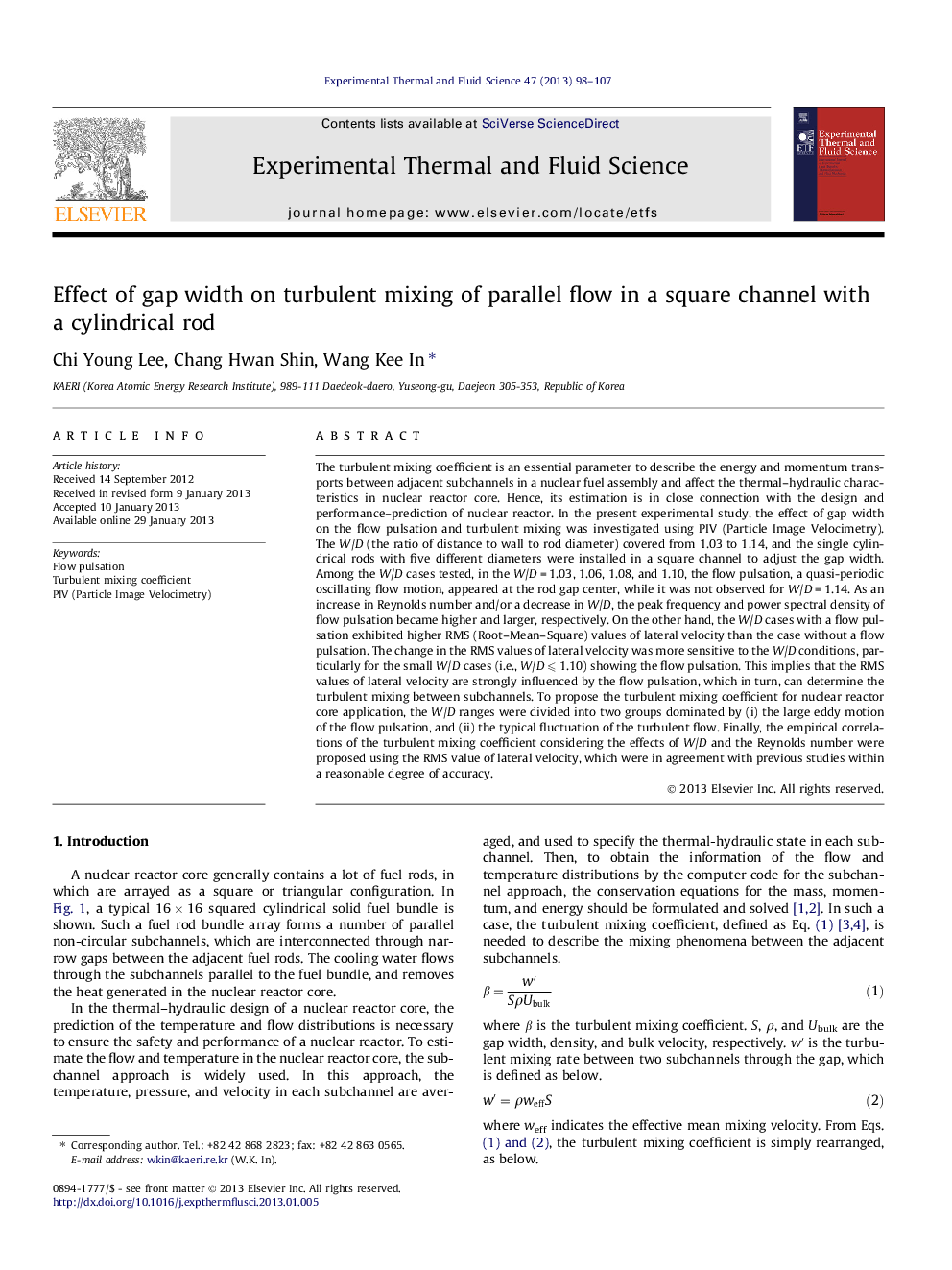| کد مقاله | کد نشریه | سال انتشار | مقاله انگلیسی | نسخه تمام متن |
|---|---|---|---|---|
| 651471 | 1457429 | 2013 | 10 صفحه PDF | دانلود رایگان |

The turbulent mixing coefficient is an essential parameter to describe the energy and momentum transports between adjacent subchannels in a nuclear fuel assembly and affect the thermal–hydraulic characteristics in nuclear reactor core. Hence, its estimation is in close connection with the design and performance–prediction of nuclear reactor. In the present experimental study, the effect of gap width on the flow pulsation and turbulent mixing was investigated using PIV (Particle Image Velocimetry). The W/D (the ratio of distance to wall to rod diameter) covered from 1.03 to 1.14, and the single cylindrical rods with five different diameters were installed in a square channel to adjust the gap width. Among the W/D cases tested, in the W/D = 1.03, 1.06, 1.08, and 1.10, the flow pulsation, a quasi-periodic oscillating flow motion, appeared at the rod gap center, while it was not observed for W/D = 1.14. As an increase in Reynolds number and/or a decrease in W/D, the peak frequency and power spectral density of flow pulsation became higher and larger, respectively. On the other hand, the W/D cases with a flow pulsation exhibited higher RMS (Root–Mean–Square) values of lateral velocity than the case without a flow pulsation. The change in the RMS values of lateral velocity was more sensitive to the W/D conditions, particularly for the small W/D cases (i.e., W/D ⩽ 1.10) showing the flow pulsation. This implies that the RMS values of lateral velocity are strongly influenced by the flow pulsation, which in turn, can determine the turbulent mixing between subchannels. To propose the turbulent mixing coefficient for nuclear reactor core application, the W/D ranges were divided into two groups dominated by (i) the large eddy motion of the flow pulsation, and (ii) the typical fluctuation of the turbulent flow. Finally, the empirical correlations of the turbulent mixing coefficient considering the effects of W/D and the Reynolds number were proposed using the RMS value of lateral velocity, which were in agreement with previous studies within a reasonable degree of accuracy.
► Effects of W/D on flow pulsation and turbulent mixing were investigated.
► Flow pulsation, a quasi-periodic oscillating flow motion, appeared in W/D ⩽ 1.10.
► Decrease in W/D increased the peak power spectral density and frequency of flow pulsation.
► RMS value of lateral velocity was strongly influenced by flow pulsation and W/D.
► Turbulent mixing coefficient correlations were proposed as a function of W/D and Re.
Journal: Experimental Thermal and Fluid Science - Volume 47, May 2013, Pages 98–107